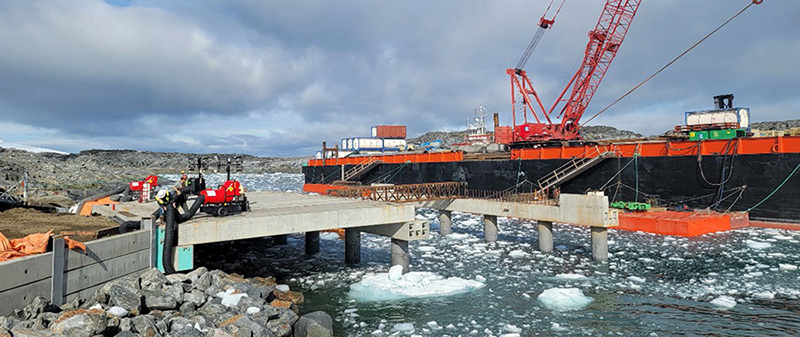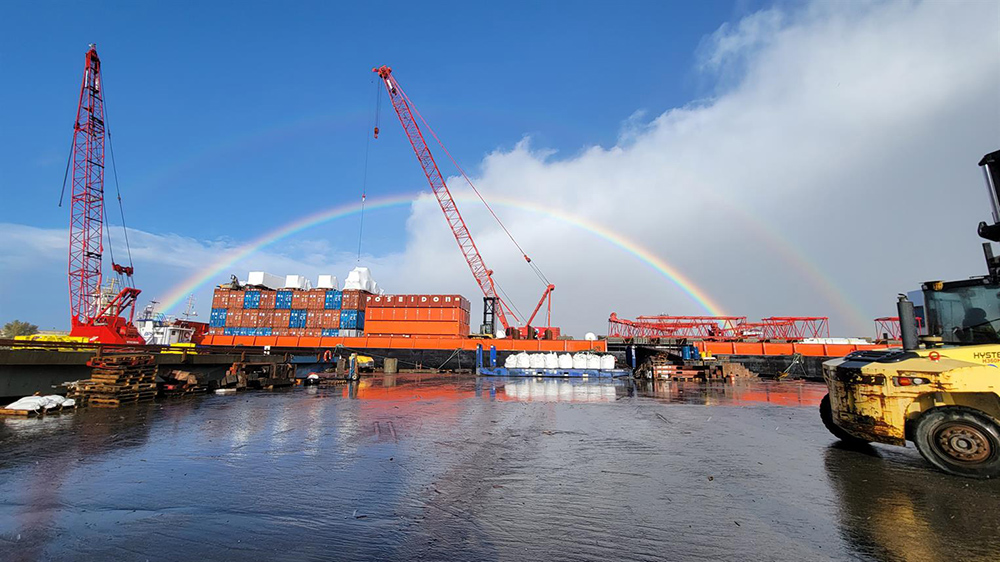Palmer Station, Antarctica
Palmer Pier Construction Underway
New Pier Will Increase the Ability to Support Scientific Research on the Station and Antarctic Peninsula
March 10, 2022
Construction has begun on the new pier at Palmer Station, the U.S. Antarctic Program's research facility on the Antarctic Peninsula. Replacing Palmer's pier is a critical step in modernizing the research station to make it run more efficiently and to expand its capacity for scientific research.
NSF's prime USAP contractor, Leidos, chose Pacific Pile & Marine of Seattle, Washington, to lead the construction effort. The new pier will consist of a concrete deck supported by steel piles that will serve the United States' research program. The new structure will extend into deeper water than the existing pier to allow for the mooring of larger ships and will give crews an additional 5,000 square feet of workspace.
The new pier will increase the ability to support scientific research on the station and throughout the peninsula by providing a larger, more reliable platform to stage materials and equipment necessary for the advancement of science. The new pier is also the first critical step in the eventual redevelopment of the entire 50-year old station and will allow for the docking of all USAP research vessels, including the proposed Antarctic Research Vessel (ARV) currently under development.

Construction of the new pier at Palmer Station in February 2022. Concrete decking sits on top of steel piles that support the new structure.
Credit: NSF
Construction equipment and materials for the new pier arrived at Palmer Station on January 4, 2022. More than 6,000 tons of material and equipment were shipped aboard a 400-foot-long barge, the Martin Ray, which was pulled by the tugboat Karen C. The tug and barge traveled more than 8,000 nautical miles from Seattle to Palmer Station, with fuel stops in California and Chile, crossing the Pacific and Southern Oceans.
Securing cargo on the barge was challenging because crews and engineers had to take into account the rough voyage across the Drake Passage, considered the stormiest sea on Earth and one of the most treacherous crossings ships have to make.

Construction of the new pier at Palmer Station in February 2022. Concrete decking sits on top of steel piles that support the new structure.
Credit: NSF
The pier construction project was subject to an environmental impact assessment conducted by the NSF Office of Polar Programs. NOAA Fisheries authorized the project after review to ensure that the activity was compliant with the Marine Mammal Protection Act and the Endangered Species Act and that mitigation measures were in place to reduce any potential impact construction might have on marine ecosystems.
Construction crews will work 7 days a week, braving the harsh Antarctic conditions, to build the pier over the remaining austral summer and fall seasons. The Martin Ray itself will serve as a construction platform due to the limited area of open land around Palmer Station. Crews will first take apart the existing pier, install a series of steel piles that will support the structure, and finally build the concrete deck. The steel piles are expected to be in place by May 2022 and the pier should be complete by July.
For more information about pier construction and its importance to Antarctic research:



